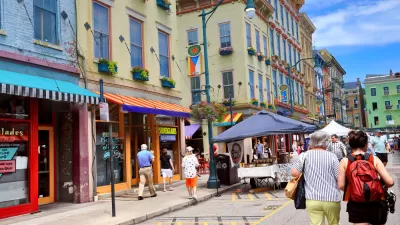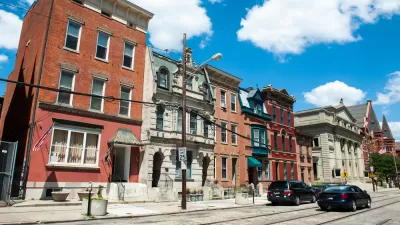Craig Chester describes the "unique partnership" between city leaders, local corporations and private developers that has helped transform Cincinnati’s Over-the-Rhine neighborhood into "one of America’s greatest smart growth success stories."
While Over-The-Rhine's (OTR) transformation from impoverished former industrial hub to thriving locus of redevelopment may be a common storyline among America’s urban neighborhoods, the partnership that helped spur the area's turnaround is quite unique, says Chester.
Despite decades of disinvestment and population loss, "Redevelopment visionaries saw the potential for revitalizing the neighborhood based around the existing historic buildings and the increasing demand for walkable urban neighborhoods close to job centers and entertainment," explains Chester. "The only thing missing was the organization and financial infrastructure on the ground to make it happen."
"That changed in 2003 with the founding of the Cincinnati Center City Development Corporation (3CDC), a uniquely structured non-profit development corporation that works in close collaboration with both public officials and major area employers including Kroger, Procter & Gamble and PNC Bank, among others. All the parties share a collective vision for a safe, vibrant, economically resilient OTR neighborhood as a catalyst for civic improvement in downtown Cincinnati."
"What sets 3CDC apart from traditional developers are the unique financing mechanisms available due to the close collaboration with corporate leaders and local officials."
"Since 2004, 3CDC has invested over $255 million in the OTR neighborhood. That includes about $64 million in public support from the City of Cincinnati, which aids in ‘gap financing’ of loans for development. According to 3CDC, these projects have:
- Restored or in process of restoring 107 historic buildings
- Developed or in process of developing 496 new and rehabbed residential units
- Developed or in process of developing approximately 127,000 SF of new and renovated commercial space
- Developed or in process of developing 869 public parking spaces in lots and garages
- Improved streetscapes
- Created an eight acre civic green space"
FULL STORY: Public-private partnerships lead the way in a Cincinnati neighborhood’s revival

Maui's Vacation Rental Debate Turns Ugly
Verbal attacks, misinformation campaigns and fistfights plague a high-stakes debate to convert thousands of vacation rentals into long-term housing.

Planetizen Federal Action Tracker
A weekly monitor of how Trump’s orders and actions are impacting planners and planning in America.

San Francisco Suspends Traffic Calming Amidst Record Deaths
Citing “a challenging fiscal landscape,” the city will cease the program on the heels of 42 traffic deaths, including 24 pedestrians.

Defunct Pittsburgh Power Plant to Become Residential Tower
A decommissioned steam heat plant will be redeveloped into almost 100 affordable housing units.

Trump Prompts Restructuring of Transportation Research Board in “Unprecedented Overreach”
The TRB has eliminated more than half of its committees including those focused on climate, equity, and cities.

Amtrak Rolls Out New Orleans to Alabama “Mardi Gras” Train
The new service will operate morning and evening departures between Mobile and New Orleans.
Urban Design for Planners 1: Software Tools
This six-course series explores essential urban design concepts using open source software and equips planners with the tools they need to participate fully in the urban design process.
Planning for Universal Design
Learn the tools for implementing Universal Design in planning regulations.
Heyer Gruel & Associates PA
JM Goldson LLC
Custer County Colorado
City of Camden Redevelopment Agency
City of Astoria
Transportation Research & Education Center (TREC) at Portland State University
Jefferson Parish Government
Camden Redevelopment Agency
City of Claremont





























